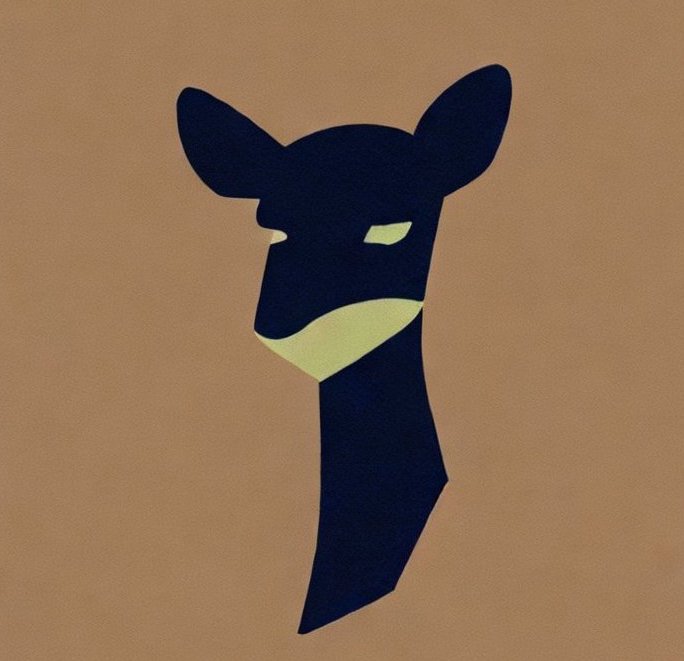An open platform for training, serving, and evaluating large language model based chatbots.
- 🔥 We released Vicuna: An Open-Source Chatbot Impressing GPT-4 with 90% ChatGPT Quality. Checkout the blog post and demo.
Join our Discord server and follow our Twitter to get the latest updates.
- Install
- Vicuna Weights
- Inference with Command Line Interface
- Serving with Web GUI
- Evaluation
- Fine-tuning
# Install FastChat
pip3 install fschat
# Install the latest main branch of huggingface/transformers
pip3 install git+https://github.com/huggingface/transformers- Clone this repository and navigate to the FastChat folder
git clone https://github.com/lm-sys/FastChat.git
cd FastChat- Install Package
pip3 install --upgrade pip # enable PEP 660 support
pip3 install -e .We release Vicuna weights as delta weights to comply with the LLaMA model license. You can add our delta to the original LLaMA weights to obtain the Vicuna weights. Instructions:
- Get the original LLaMA weights in the huggingface format by following the instructions here.
- Use the following scripts to get Vicuna weights by applying our delta. They will automatically download delta weights from our Hugging Face account.
NOTE: Our released weights are only compatible with the latest main branch of huggingface/transformers. We install the correct version of transformers when fastchat is installed.
This conversion command needs around 60 GB of CPU RAM.
python3 -m fastchat.model.apply_delta \
--base /path/to/llama-13b \
--target /output/path/to/vicuna-13b \
--delta lmsys/vicuna-13b-delta-v0This conversion command needs around 30 GB of CPU RAM.
python3 -m fastchat.model.apply_delta \
--base /path/to/llama-7b \
--target /output/path/to/vicuna-7b \
--delta lmsys/vicuna-7b-delta-v0The command below requires around 28GB of GPU memory for Vicuna-13B and 14GB of GPU memory for Vicuna-7B.
python3 -m fastchat.serve.cli --model-name /path/to/vicuna/weights
If you do not have enough GPU memory, you can use model parallelism to aggregate memory from multiple GPUs on the same machine.
python3 -m fastchat.serve.cli --model-name /path/to/vicuna/weights --num-gpus 2
This runs on the CPU only and does not require GPU. It requires around 60GB of CPU memory for Vicuna-13B and around 30GB of CPU memory for Vicuna-7B.
python3 -m fastchat.serve.cli --model-name /path/to/vicuna/weights --device cpu
Use --device mps to enable GPU acceleration on Mac computers and use --load-8bit to turn on 8-bit compression.
python3 -m fastchat.serve.cli --model-name /path/to/vicuna/weights --device mps --load-8bit
If you do not have enough memory, you can enable 8-bit compression by adding --load-8bit to commands above.
It works with CPU, GPU, and Metal.
This can reduce the memory usage by around half with slightly degraded model quality.
python3 -m fastchat.serve.cli --model-name /path/to/vicuna/weights --load-8bit
Besides, we are actively exploring more methods to make the model easier to run on more platforms. Contributions and pull requests are welcome.
python3 -m fastchat.serve.controllerpython3 -m fastchat.serve.model_worker --model-path /path/to/vicuna/weightsWait until the process finishes loading the model and you see "Uvicorn running on ...".
python3 -m fastchat.serve.test_message --model-name vicuna-13bpython3 -m fastchat.serve.gradio_web_serverOur AI-enhanced evaluation pipeline is based on GPT-4. Here are some high-level instructions for using the pipeline:
First, generate answers from different models. Use qa_baseline_gpt35.py for ChatGPT, or specify the model checkpoint and run model_qa.py for Vicuna and other models.
Then, use GPT-4 to generate reviews automatically, which can be done manually if the GPT-4 API is not available to you. Once you have your evaluation data, visualize the results by running generate_webpage_data_from_table.py, which generates data for a static website.
Finally, serve a static website under the webpage directory. You can simply use python3 -m http.server to serve the website locally.
Besides the evaluation workflow, we also document the data format used for evaluation, which is encoded with JSON Lines and includes information on models, prompts, reviewers, questions, answers, and reviews. You can customize the evaluation process or contribute to our project by accessing relevant data.
Check evaluation for detailed instructions.
Vicuna is created by fine-tuning a LLaMA base model using approximately 70K user-shared conversations gathered from ShareGPT.com with public APIs. To ensure data quality, we convert the HTML back to markdown and filter out some inappropriate or low-quality samples. Additionally, we divide lengthy conversations into smaller segments that fit the model's maximum context length. For detailed instructions to clean the ShareGPT data, check out here.
Due to some concerns, we may not release the data at the moment. If you would like to try the fine-tuning code, you can try to run it with our preprocessed alpaca dataset (originally from here).
We fine-tune the model using the code from Stanford Alpaca, with some modifications to support gradient checkpointing and Flash Attention. We use similar hyperparameters as the Stanford Alpaca.
| Hyperparameter | Global Batch Size | Learning rate | Epochs | Max length | Weight decay |
|---|---|---|---|---|---|
| Vicuna-13B | 128 | 2e-5 | 3 | 2048 | 0 |
SkyPilot is a framework built by UC Berkeley for easily and cost effectively running ML workloads on any cloud (AWS, GCP, Azure, Lambda, etc.). To use SkyPilot, install it with the following command and setup the cloud credentials locally following the instructions here.
# Install skypilot from the master branch
pip install git+https://github.com/skypilot-org/skypilot.gitVicuna can be trained on 8 A100 GPUs with 80GB memory. The following command will automatically launch a node satisfying the requirement, setup and run the training job on it.
sky launch -c vicuna -s scripts/train-vicuna.yaml --env WANDB_API_KEYOther options are also valid:
# Launch it on managed spot to save 3x cost (train Vicuna-13B with around $300)
sky spot launch -n vicuna scripts/train-vicuna.yaml --env WANDB_API_KEY
# Train a 7B model
sky launch -c vicuna -s scripts/train-vicuna.yaml --env WANDB_API_KEY --env MODEL_SIZE=7Note: Please make sure the WANDB_API_KEY has been setup on your local machine. You can find the API key on your wandb profile page. If you would like to train the model without using wandb, you can replace the --env WANDB_API_KEY flag with --env WANDB_MODE=offline.
Launch the training job with the following line (will be launched on a single node with 4 A100-80GB GPUs)
sky launch -c alpaca -s scripts/train-alpaca.yaml --env WANDB_API_KEY
Vicuna can also be trained on 8 A100 GPUs with 80GB memory with the following code. To train on fewer GPUs, you can reduce the per_device_train_batch_size and increase the gradient_accumulation_steps accordingly to keep the global batch size the same. To setup the environment, please see the setup section in scripts/train-vicuna.yaml.
torchrun --nnodes=1 --nproc_per_node=8 --master_port=<your_random_port> \
fastchat/train/train_mem.py \
--model_name_or_path <path-to-llama-model-weight> \
--data_path <path-to-data> \
--bf16 True \
--output_dir ./checkpoints \
--num_train_epochs 3 \
--per_device_train_batch_size 4 \
--per_device_eval_batch_size 4 \
--gradient_accumulation_steps 1 \
--evaluation_strategy "no" \
--save_strategy "steps" \
--save_steps 1200 \
--save_total_limit 100 \
--learning_rate 2e-5 \
--weight_decay 0. \
--warmup_ratio 0.03 \
--lr_scheduler_type "cosine" \
--logging_steps 1 \
--fsdp "full_shard auto_wrap" \
--fsdp_transformer_layer_cls_to_wrap 'LlamaDecoderLayer' \
--tf32 True \
--model_max_length 2048 \
--gradient_checkpointing True \
--lazy_preprocess True
